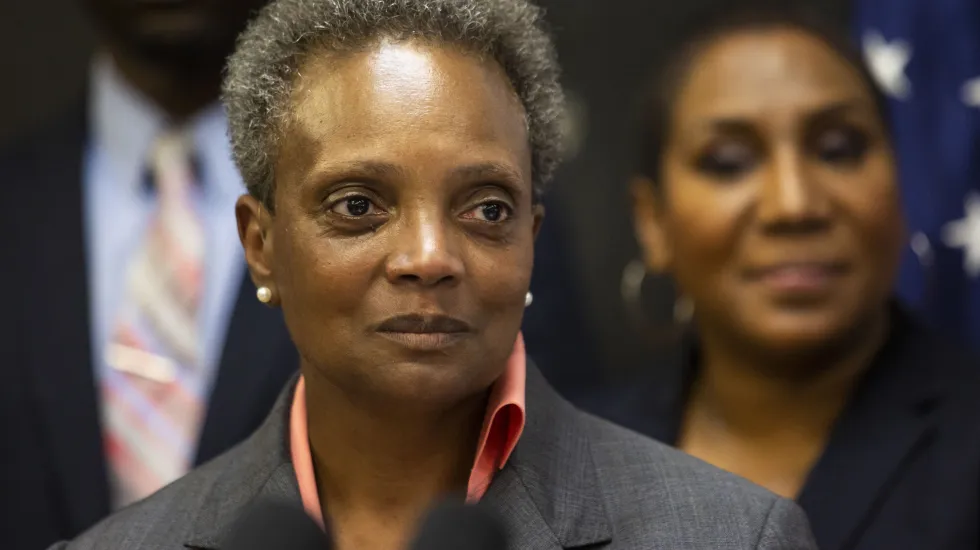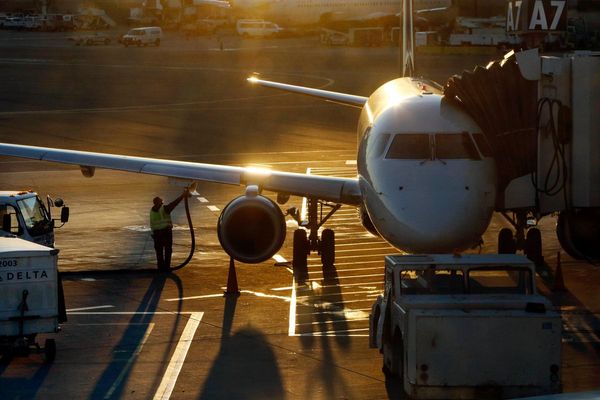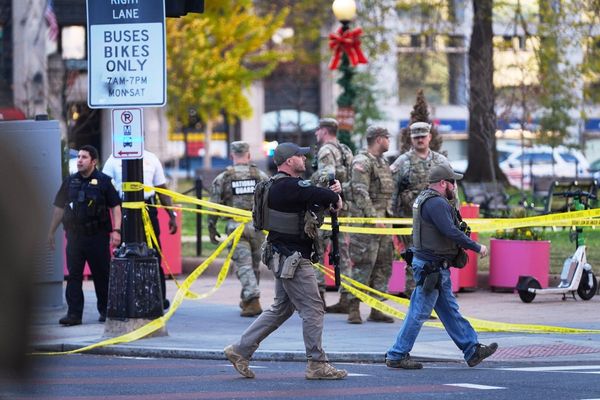
Following Chicago’s deadliest year in decades, the number of people shot and killed in the 15 communities targeted in Mayor Lori Lightfoot’s signature anti-violence plan has fallen by 26% ahead of the historically brutal summer months — a pivotal stretch in what she has described as a “make-or-break year” for lowering crime.
This year’s drop marks a promising trend and accounts for much of an overall citywide reduction in shootings and homicides, though the city has experienced jarring spates of violence when the weather has warmed. Lightfoot and members of her administration have nevertheless begun touting and taking credit for the downtick, which experts believe is premature.
Launched in the summer of 2020, the “Our City Our Safety” initiative looks to flood the most dangerous communities with new resources, from violence intervention programs to help with jobs, housing and health. The mayor has framed it as an “all-hands-on-deck” approach to violence prevention, with the city taking cues from its COVID-19 response by pulling together various agencies and outside partners to deliver services.
Through May 8, the targeted communities on the South and West sides saw a 19% decline in homicides and a 28% drop in non-fatal shooting victims from the same time last year, according to a Sun-Times analysis. Across the city, those numbers have fallen 7% and 17% respectively, accounting for a 15% overall drop over the same period.
But despite trending in the right direction, the toll is still far higher than in both 2019 and 2020. At least 901 people have been wounded by gun violence through May 8, 173 of them fatally. Seventeen more people have been killed by other means.
During a news conference last week, Lightfoot pointed to the improvement in the 15 priority areas as an example of the progress being made to address the pervasive violence that has grown into a serious political liability. Still, she acknowledged, “It’s not enough.”
In an interview, Lightfoot tied this year’s early improvements in the target areas to the influx of resources, a new beat-minded policing approach and improved community outreach, including tabletop exercises training residents to “respond to some kind of violence-related trauma” and efforts to gather intel on troubled blocks and buildings.

“When people feel like they’ve got some ownership, they’ve got data and they’ve got our attention and focus, it makes a huge difference,” she said. “And obviously the fact that we’re bringing what we call the whole of government approach, which is telling our city commissioners that their work has to be viewed from a violence reduction lens and really engaging with them and their senior staff.”
She added: “I think all these things are making a difference.”
‘You can’t do anything about the weather’
Tamara Mahal, who runs the city’s Community Safety Coordination Center that serves as a hub for the initiative, said her team is “cautiously optimistic about the results” so far this year. Yet crime experts doubted the plan has had any real impact.
A more simple explanation for the downtrend, according to Wesley Skogan, a Northwestern University professor who specializes in crime issues: The weather has been unseasonably crummy this year.

Because shootings and homicides are typically committed in public, he said they’re more vulnerable to shifts in weather “than almost anything we track in the world of crime.” Indeed, a study published in 2020 by researchers from Harvard and Columbia universities found that between 2012 and 2016 “shootings in Chicago were more likely to happen on warm days and especially during the weekend or holidays.”
Until this week, the Chicago area had been particularly dreary over the first four months of the year, recording more precipitation and lower temperatures than on average, according to the National Weather Service.
When temperatures rose into the 80s during one weekend last month, Skogan noted there was “a horrific round of shootings.” Then on Monday, as temperatures jumped again, at least 12 people were shot across the city, two of them fatally.
“Weather is one of the most reliable predictors of crime,” Skogan said. “You can’t do anything about the weather.”
Lance Williams, an urban studies professor at Northeastern Illinois University who sat in on discussions about funding the mayor’s initiative, has remained a vocal critic of the plan, which he described as a “PR campaign” that is “good on paper” but isn’t “actionable” without independent oversight and a clear budget.

He believes the dip in shooting and homicide victims is merely a reversion to more normal levels of violence after “the pandemic threw things way out of whack.”
Williams noted that officers pulled back in the name of social distancing and in response to the protests sparked by the murder of George Floyd, bringing down arrests. But he also claimed detainees were being cut loose from the Cook County Jail to avoid an outbreak, sending more “shooters” home as guns purchased with ill-gotten stimulus money flooded the street.
“The high-risk guys felt like, ‘Oh, it’s open season. We can do whatever we wanna do,’” he said. “That’s what they did. They went crazy because they knew they wouldn’t have any problems with the police.”
‘It’s a 12-month, year-round strategy’
City officials are now preparing for the looming summer months.
Acknowledging a need to scale up to cover special events and respond to violence, Chicago Police Supt. David Brown said the department will continue pulling officers from outside patrol to help fill the void on a rolling basis.
But in a break from recent tradition, he isn’t rolling out a new summer strategy. Instead, he said the department will remain laser-focused on 55 beats that have accounted for more than half the city’s crime and cover much of the same ground as the 15 priority areas.
So far this year, there’s been a 35% drop in homicide and shooting victims across those beats, with only 13 of them seeing an increase from last year. The numbers, however, are still higher than the two previous years, tracking with the citywide trend.
“It’s a 12-month, year-round strategy,” he told the Sun-Times. “It’s not … you do something different for the summer that you don’t do for the fall, spring and winter. We think social services are needed year-round, we think community engagement’s needed year-round, we think beat integrity’s needed year-round.
“So these can’t just be a summer-only strategy. I think you’ve missed quite a few opportunities to build relationships if you wait until the summer.”

Mahal, on the other hand, said her team has to “ratchet up support” for kids who are out of school for the summer. She said it’s particularly important to plan events and other activities in the priority areas to ensure the city is “engaging youth, engaging families and providing safe spaces.”
“The more people that we have out on the block and on the street,” she added, “the more we tend to see people feeling safer and, most importantly, building those relationships with each other.”
Shootings up in S. Lawndale, Humboldt Park
As part of the “Our City Our Safety” plan, the city dedicated more than $50 million for violence reduction efforts in 2021, although a funding breakdown posted online last year shows nearly $10 million in contracts from the initial investment hadn’t been awarded. Another $411 million was included in this year’s budget, but city officials were unable to provide a full accounting of how exactly that money is being spent.
The budget set aside:
- $115 million or vacant lot reduction and improvements to parks;
- $85 million more for violence reduction;
- $80 million for youth jobs programs and access and awareness for public support services;
- $62 million for affordable housing and homelessness support services;
- $40 million for alternate crisis response and gender-based violence reduction efforts; and
- $30 million for small business and workforce support programs.
A list detailing the violence reduction investments — the only such breakdown made public — shows contracts worth nearly $28 million hadn’t been awarded as of Wednesday.
Officials are still struggling to tamp down violence in South Lawndale and Humboldt Park, the only priority communities where the number of shooting and homicide victims has risen this year.
On Monday, two men were gunned down inside Humboldt Park just a few hours after three people were wounded in a shooting just over a mile away.
In South Lawndale, which includes much of Little Village, Mahal said the violence has apparently spiked along entrenched gang lines. Through the end of last month, shootings have left five dead and 38 others wounded in South Lawndale, accounting for a 48% increase from the same time last year.
Brown pointed to a lack of violence interrupters “to meet some of the challenges” facing the largely Hispanic community, where more than $1.5 million has been spent on street outreach over the past two years. Mahal insisted more of that work is needed “across the board.”
“Not nearly as significant as in Little Village, but in other predominantly Hispanic neighborhoods, we’re seeing some flareups,” Mahal said. “So I think that’s a concern of the outreach community and something that we want to work with them to address.”







